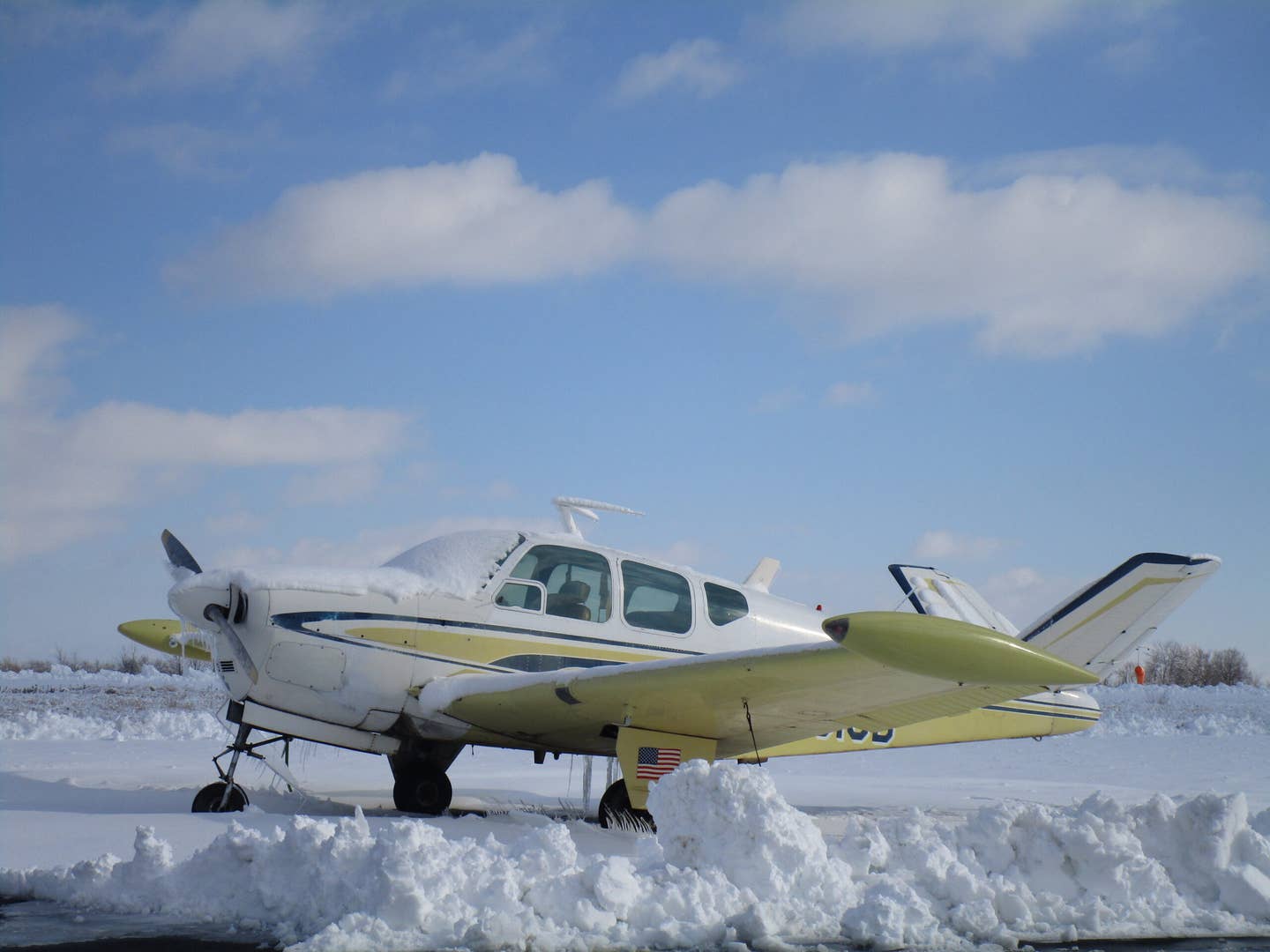Apps On Your Avionics, Kirk Off To Space, A Baffling PC-12 Crash
Plus, a safety report for the last pre-pandemic year, jet fuel from the air, and lasers, lasers everywhere.

Honeywell launched a new, scalable flat panel avionics system called Anthem that will go in aircraft ranging from drones up through large commercial planes. The system has a flashy lineup of features, including a number of 3D and synthetic vision functions, one of which gives 3D situational awareness for runway overruns, the first of its kind to our knowledge, and 3D moving maps of the airport environment. Anthem is cloud-connected and can use apps, like a smartphone, Honeywell says. The system will allow flight plan loading via the cloud, as well.
A PC-12 crashed shortly after takeoff from Milan, Italy, hitting the roof of a vacant commercial building and bursting into flames. All eight aboard the plane, including its pilot, a Romanian billionaire, were killed. The plane was on its way to Sardinia. Investigators are trying to determine the cause of the accident. The civil investigative head raised eyebrows when she mentioned an "anomaly" that appeared on radar in the vicinity of the PC-12 immediately preceding the crash.
AOPA has released its annual Joseph T. Nall safety report for the year 2019, the latest year for which the organization had full data available in order to crunch the numbers. There's little news, however, with accident rates at relatively low levels (compared to previous decades) and remaining largely flat within the expected variation based on small-numbers dataset. This also marks one year to go until we see the results of the Nall report for 2020, 10 months of which were impacted by the pandemic.
Gulfstream launched a pair of new jets this week, the G800 and G400, based on the design that has already created the G500, G600, and G700. All feature tremendous range for their segments, and the G800 will push that to the limits, with a targeted 8,000 nm range at Mach .85. At Mach .90---its top speed is Mach .925---the jet will still make 7,000 nm. The new Gulfstream flagship will reportedly cost $71.5 million. It's expected to be in customers' hands starting in 2025.
Wow, are there ever a lot of laser strikes on airplanes. The FAA released its summary of the laser strike numbers for the year 2020, during which the FAA received reports of 6,723, this compared to 6,853 reported strikes in 2019. The agency is reminding people that violators face fines of up to $11,000 for a single incident and up to $30,800 (an odd number) for multiple incidents. California is apparently laser happy, with more than 1,100 reports emanating from the Golden State. Texas, with just over 600, is a distant second.
A story by Reuters news service discussed the state of Boeing's headquarters in Chicago (remember that?) after multiple crises, including reestablishing relationships with customers, and the FAA has pulled execs back to Seattle. The company's incentive deal with Chicago, the story said, expires at the end of this year.
Sun 'n Fun umbrella org the Aerospace Center for Excellence named Daryl Price its new executive director, the organization announced this week. Price, a commercial pilot and experienced CFI, has a long and impressive track record in business in Wisconsin.
In what sounds like a very well-deserved retirement, Aviation Supplies and Academics (ASA)'s owner and president Mike Lorden is stepping down from the company at the end of the year. Longtime ASA employee Greg Robbins will assume ownership of the company and continue as sales manager. The company publishes hundreds of book titles and sells a line of popular supplies. It currently offers more than 1,000 different products.
A German company called Atmosfair has opened a bio-fuel production plant. The manufacturing process takes CO2 from the air, along with water and electricity from nearby wind farms, to produce hydrogen, which it can then turn into jet fuel. The process sounds crazy complicated, but it's not. Moreover, the amount of CO2 expended in the burning of the jet fuel is equal to the amount of CO2 that Atmosfair will take out of the atmosphere, making it a carbon-neutral fuel.
Blue Origin announced that William Shatner, the actor played by Starship Enterprise Captain James T. Kirk (or the other way around maybe) will head to space on Blue Origin's next launch, set to blast off October 12, 2021, (that is, next Tuesday). The mission, New Shepherd NS-18, will also be carrying Blue Origin's Audrey Powers, VP of mission operations. Blue Origin says that Shatner, 90, has never been to space before (but c'mon). The trip is a short one, but it will fly higher than the Karman Line, the internationally recognized dividing line between our atmosphere and the final frontier. Two other crewmembers, who are not as well known, will be accompanying Shatner/Kirk and Powers on the trip. To all: Live long and prosper!

Subscribe to Our Newsletter
Get the latest Plane & Pilot Magazine stories delivered directly to your inbox






